Exploring the Timeless Landmarks of Babylon an Ancient City
Perhaps this city is the most important ancient city that comes to your mind to visit its landmarks, as it was one of the world’s greatest cities and has gained a fame that none of its contemporary cities has ever got. The city is 90 km away from the center of the capital, Baghdad.
Among its most important landmarks:
Unveiling the Ancient City of Babylon
Babylon is a symbol of grandeur and history, often regarded as the greatest city in ancient times. It is the only city mentioned in the Torah, Bible, and Qur’an, with its name meaning “Gate of God” or “Divine Gate.” Initially a small city, Babylon gained prominence during the reign of King Hammurabi (1972-1750 BC), the great legislator, and later under King Nebuchadnezzar (604-562 BC), known for his 43-year rule. The city fell to Cyrus the Great in 539 BC and later to Alexander the Great in 331 BC. Alexander praised Babylon’s beauty and architecture, famously stating, “Whoever did not see Babylon did not see anything in his life.” He spent time there before continuing his conquests and later returned to Babylon, where he eventually died.
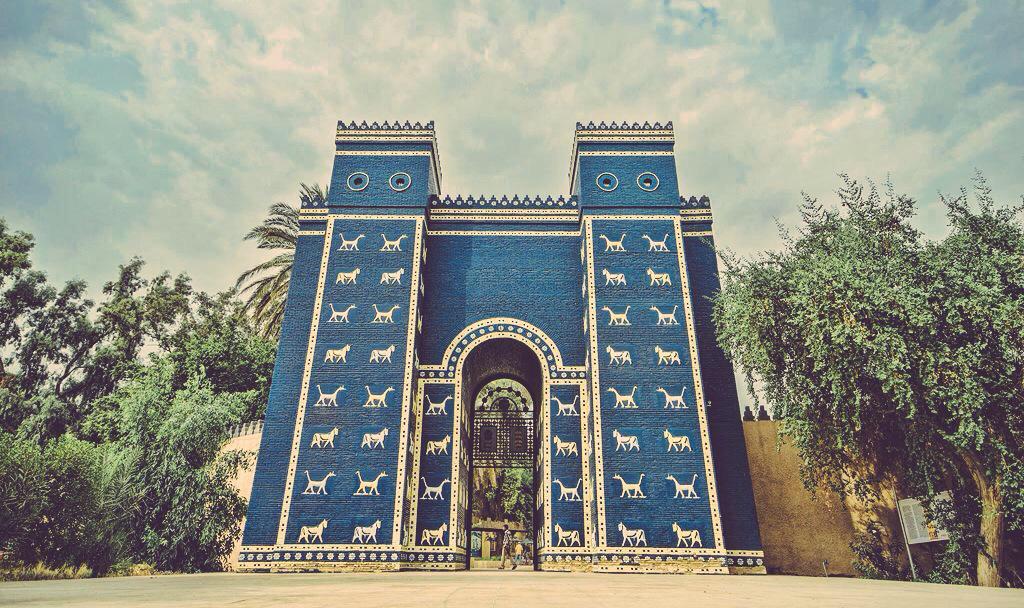
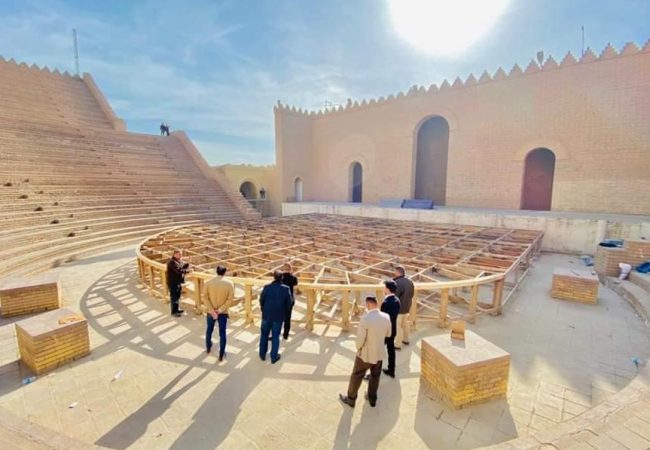
Preservation and Design of the Babylonian Theatre
The Babylonian Theatre, an impressive semi-circular amphitheater, was constructed by Alexander the Great to accommodate sports events and public gatherings. This ancient structure showcases a tiered design with three distinct seating stages. The first stage offers 6 seats, the second stage contains 9 seats, and the third stage features 12 seats, allowing for a large audience to enjoy the events taking place. The design of the theatre reflects the importance of these gatherings in the ancient world, serving both as a space for entertainment and as a symbol of cultural significance. Over the centuries, the theatre has been carefully preserved and maintained, ensuring that its historical and architectural features remain intact. This preservation allows visitors and historians to study the design and function of the theatre, offering valuable insight into ancient Babylonian society and the era of Alexander the Great.
Ishtar Gate - A Symbol of Babylonian History and Mythology
The Ishtar Gate, a model of which is displayed in the ancient city, is half its original size. Discovered in 1898 during the Ottoman era, it was transported to Germany, dismantled into 200,000 pieces, and took 3 years to reconstruct. The gate features mythical animals like dragons, lions, snakes, and eagles, symbolizing the god Marduk, while bulls represent the god Adad. Built by Nebuchadnezzar in 575 BC, it was the eighth gate of Babylon and unmatched in size and grandeur. Today, the gate is housed in the Pergamon Museum in Germany.
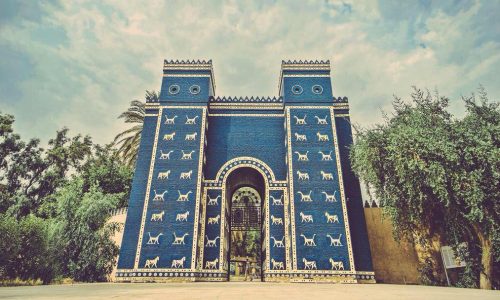
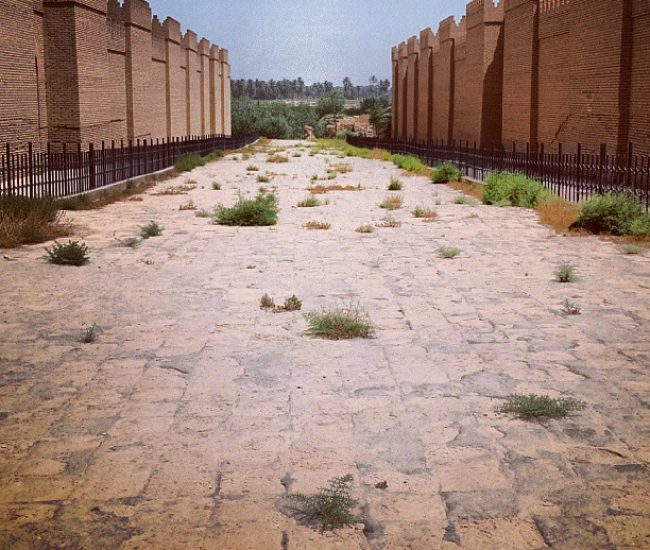
Al-Mawkib Street - The Sacred Route of Babylon
The main street of Babylon was not only a key thoroughfare but also a sacred road connecting the city to the “Akitu” house, where important religious ceremonies, especially the New Year festival, were held. The southern section of the street, known as “Ishtar Lamcho,” meaning “the Ishtar god protects his army,” reflected the divine protection offered by the goddess Ishtar. The northern section, called “Lai Bor Shabu,” meaning “the street that enemies do not cross,” symbolized the strength and security of the city, serving as a protective barrier.
An important feature of this street was its advanced sewage system, which was connected to the rest of the city to drain water, ensuring the streets remained clean and preventing flooding. This impressive infrastructure was a testament to the Babylonians’ engineering skills. Today, the preserved walls of Al-Mawkib Street can be found in the Pergamon Museum in Germany, offering a glimpse into Babylon’s grandeur and advanced urban planning.
Southern Palace of Nebuchadnezzar - A Historic Babylonian Landmark
The grand palace, measuring an impressive 300 by 190 meters, was built with sturdy bricks, showcasing the architectural brilliance of ancient city. Known as the southern palace of the mighty King Nebuchadnezzar, it was not only a royal residence but also a symbol of the grandeur and power of city. Throughout history, this palace served as the home for various rulers, including the kings of Babylon, Persia, and Greece. It was even the place where the legendary conqueror, Alexander the Great, passed away.
The palace is composed of five distinct halls, each reflecting the opulence and significance of the building. The most notable of these is the throne hall of the king, a majestic room with impressive dimensions of 52 by 15 meters. This hall was the heart of the palace, where important ceremonies and events were held, and where the king would preside over his court. The palace not only reflects the power and wealth of its time but also serves as a historical landmark that witnessed the reign of some of the most influential figures in history.
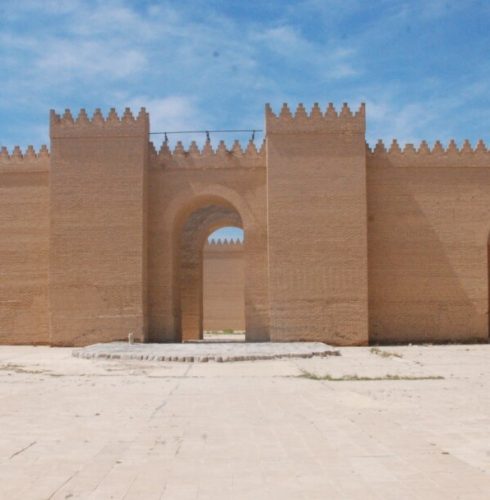
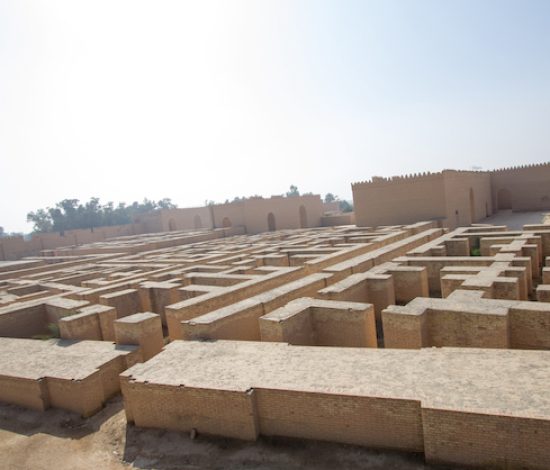
Discovering the Northern Palace and the Lion of Babylon
The Northern Palace of Babylon is an important archaeological site, best known for the discovery of the iconic Lion of Babylon, found in 1776 by a German archaeological mission. This magnificent sculpture, made from basalt, weighs 4 tons and dates back to the Hittite period. Notably, basalt was not native to the Babylonian region but was abundant in the Hittite lands, located to the north of city in present-day Turkey.
The Northern Palace itself, once a grand structure, was demolished in the late 19th century. The bricks from this ancient palace were repurposed for the construction of the Hindiya Dam in 1890 AD. The dam, which was built by a wealthy Indian woman, was named in her honor. Today, the Lion of Babylon remains a powerful symbol of the city’s greatness and the enduring legacy of its ancient civilization, despite the destruction of the palace.
Tamach Temple - A Sacred Babylonian Site for Women and Mysticism
Tamach Temple, known for its deep spiritual significance, derives its name from the word “Tamakh,” meaning “the great lady.” This temple was a sacred place exclusively for women in ancient city. Once a year, Babylonian women would gather at the temple to seek blessings for a holy marriage, which was considered an important and divine aspect of their lives.
The temple is particularly distinguished by its holy well, a significant feature in Babylonian religious practices. According to tradition, any Babylonian woman who had committed a sin or guilt was required to bathe in the waters of this sacred well. It was believed that the waters would cleanse her of her sins, purifying her spiritually and granting her absolution. The well, still existing to this day, remains a symbol of this ancient practice.
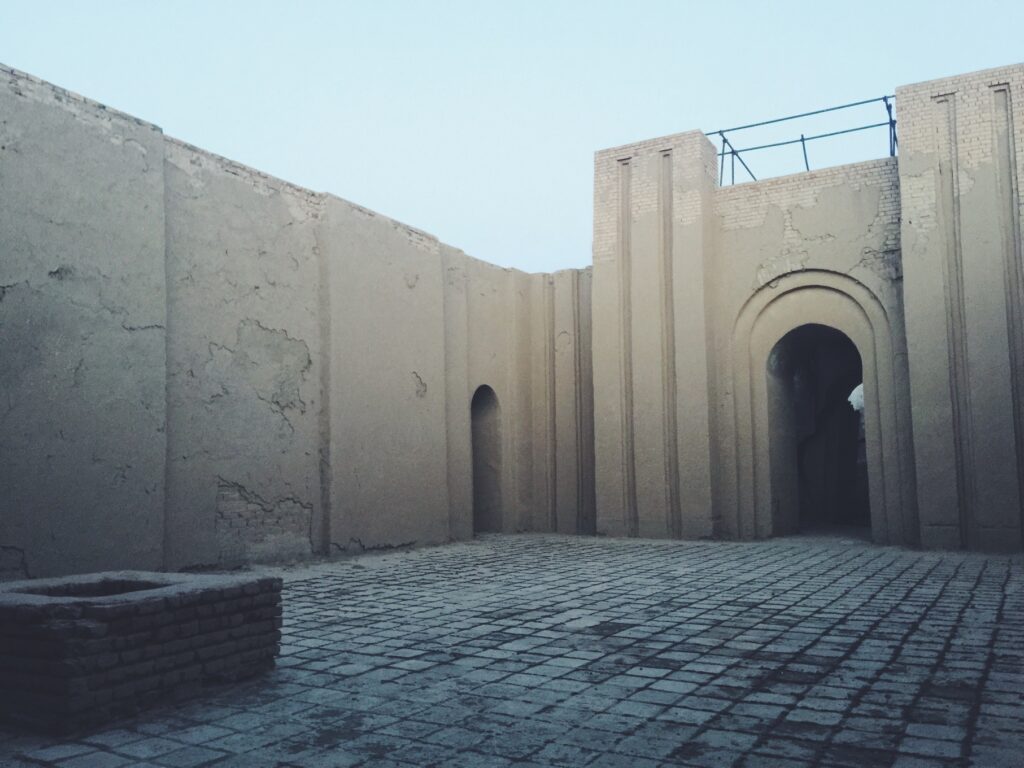
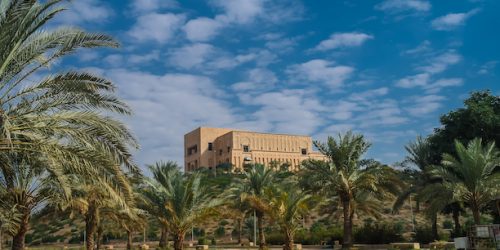
Saddam's Palace - Power and Controversy
It is considered one of the most famous Iraqi palaces, which consists of 6 floors (4 upper and 2 lower) and an artificial hill overlooking the ruins from a side and from the Euphrates River from another side. The design of the palace is in the form of an archaeological site or looks like a ziggurat from the outside, and its location is in the tourist resort of antiquities in Al-Jala near the Ishtar Gate. The palace is famous for its geometric engravings and palm trees on the walls, and former President Saddam Hussein could look at the ruins of city, which date thousands of years.
Kish - The First Kingdom and Queen Kubaba
According to the Sumerian version of history, it is considered the first city in which a king reigns after the great flood that was mentioned in Sumerian myths, Judaism, Christianity and Islam.
It is pronounced in the Akkadian language, Kichatu, which was located near Tel Al-Ahmar in the Iraqi province of Babylon, 12 km from Babylon, 80 km south of Baghdad.The queen Kubaba is the first woman from Mesopotamia to sit on the throne and the first female queen presented by history. Kubaba was mentioned in the list of Sumerian kings, where she ruled the city of Kish in the year 2330 BC. Thus, she preceded the first Egyptian queen, “Sebkneferu”, as well as the famous Egyptian queen Cleopatra, and Torba by thousands of years as the first women to be inaugurated as a queen.
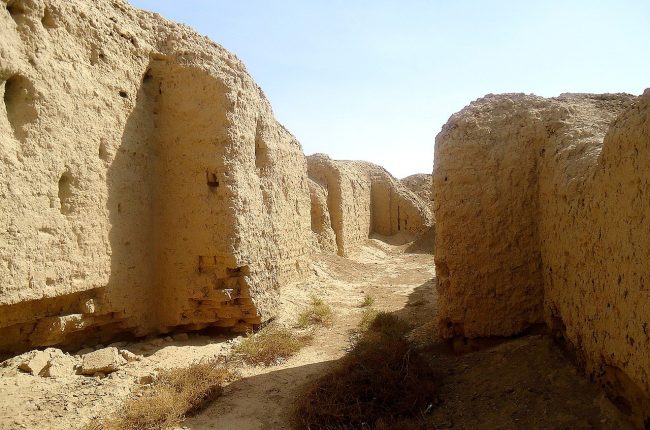
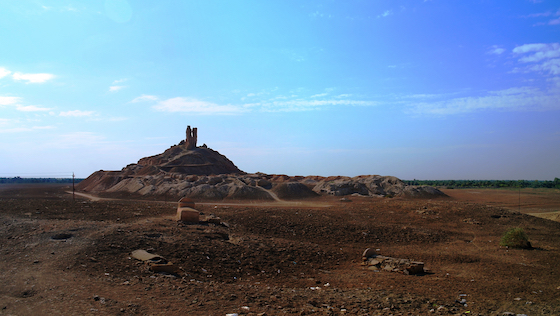
Borsippa - The Ziggurat of Nabu and its Mysteries in Babylonian History
It is currently called Birs Nimrud (Athar Birs), which was important in the Babylonian religion, as it was a place of worship for the god (Nabu), the son of the great Babylonian god (Marduk), located about 17 km south of the city of city. The city of Borsippa contains a ziggurat, which is present until today, rising to 47 meters above ground level, and which was decorated of its colors and seven layers. When you climb the ziggurat, you see at the top what you might wonder about: huge blocks of molten bricks of dark green color. However, we cannot give a sufficient explanation for this phenomenon, although some see that the entrance to the amphitheater was hit by a meteorite, which led to melting its bricks.
Historical and Religious Significance of Dhul-Kifl Shrine
Dhul-Kifl is located on the eastern bank of the Euphrates River, between Kufa and Hilla. Historical records indicate that King Nebuchadnezzar II deported Jewish captives from Judea to Babylon, including King Jehoiachin, his family, and the Prophet Dhul-Kifl with a group of priests and common people. They were settled south of Babylon.
Above the shrine of Prophet Dhul-Kifl is a Seljuk-style conical dome, along with a blue dome decorated with engravings. The shrine is part of the historical Nukhaila mosque, associated with Imam Ali (peace be upon him), whose minaret, built by Mughal Sultan Okjaitu Khadbanda in 703 AH, still stands. The minaret is adorned with rare Kufic script, with four words: “I love Mohamed and Ali.”
Nearby, you can find the Muharram of the Commander of the Faithful, where he prayed three times during key moments in his life. Beneath the shrine of Dhul-Kifl, five of his companions—Joseph, Joshua, Khob, John Al-Damlaji, and Baruch—are also buried. It is said these were prophets of the ancient Babylonian Talmud. Additionally, the shrine of al-Khidr (peace be upon him) lies near Dhul-Kifl’s shrine.
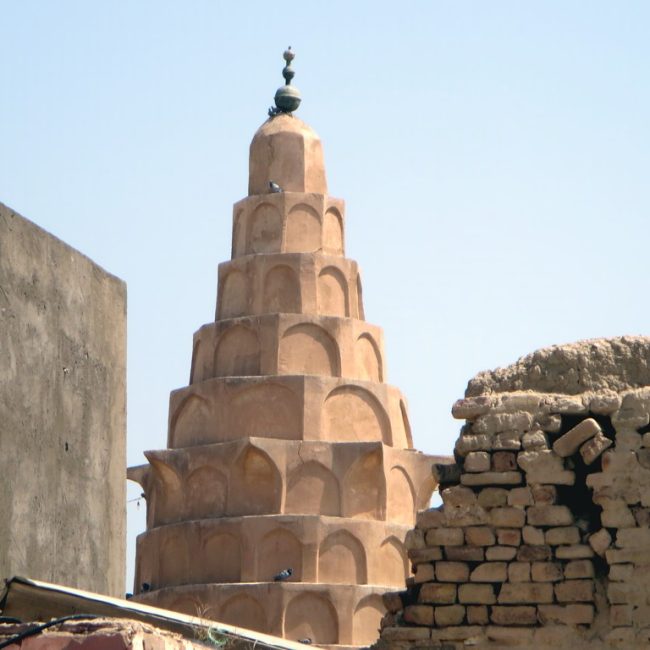
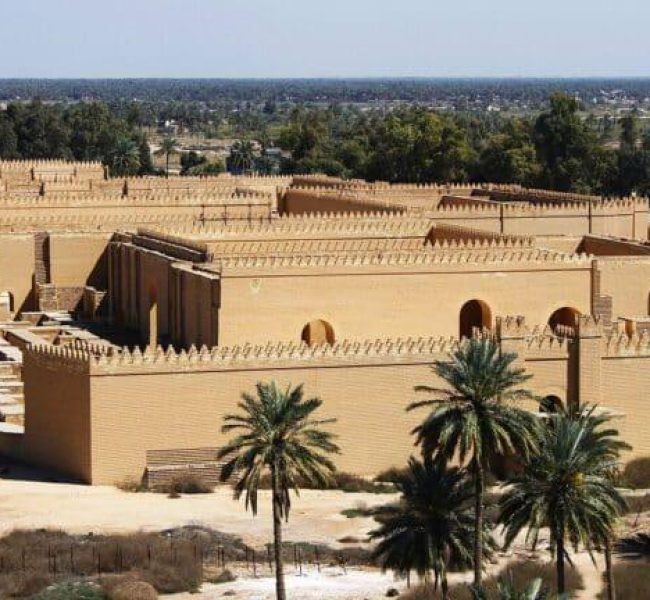
Daniel's Market - A 19th-Century Architectural Landmark
The market was built in the nineteenth century by the distinguished Iraqi Jewish personality Menachem Salih Daniel, who played a pivotal role in its creation. Renowned for its exceptional beauty, the market is designed with a series of stunning arches, giving it a distinctive and charming architectural style. The market was originally designed to extend from several interconnected rooms that functioned as a hostel for Jewish visitors making their pilgrimage to the nearby shrine of the Prophet Ezekiel.
The historical significance of the market is not only tied to its architectural splendor but also to its role as a welcoming space for Jewish travelers seeking rest and shelter. The market’s proximity to the shrine adds a spiritual dimension to its importance, as it served as a key stop for those on their religious journey. The combination of its aesthetic appeal, cultural importance, and historical function makes the market a unique landmark in the area, embodying both the religious and architectural heritage of the region.
Prophet Ayyub Shrine - A Sacred Site of Healing and Divine Prayer in Hilla
It is located in the southeast of the city of Hilla, on the Hilla River in particular. It is said that this is the place where Allah answered the prayer of prophet Ayyub, peace be upon him, where Allah brought water out of the earth in the form of two wells, one large well and another one smaller than the first: Allah commanded His Prophet to wash and drink from its water, and it was the way for his recovery from his skin disease, which he was suffering from for decades.
It was not reported that this is the shrine and tomb of Prophet Ayyub, but rather his house and the place where his prayers were answered.
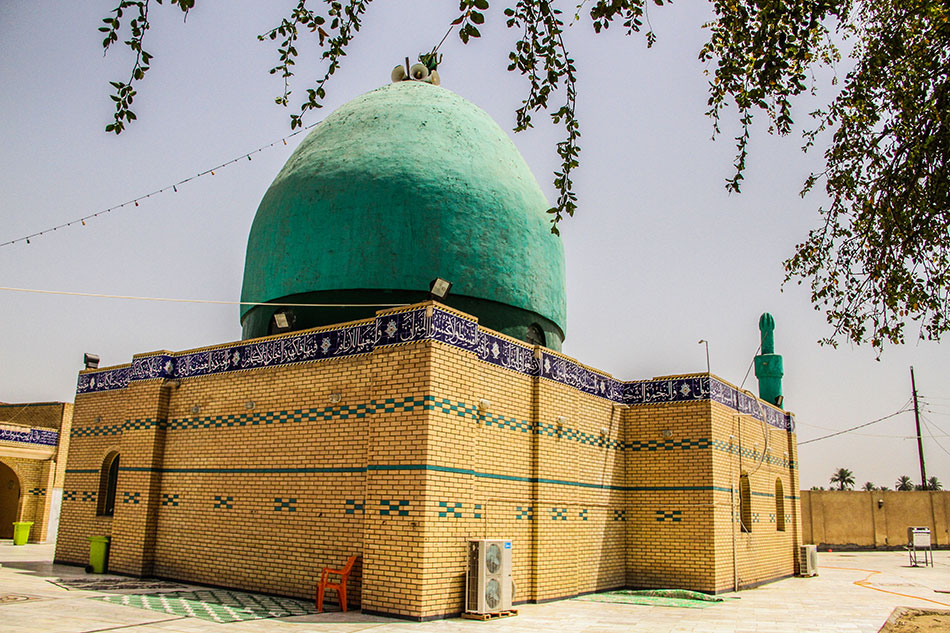
Comprehensive FAQ for Babylon - Your Go To Resource for Answers
Babylon is a historic city with ancient ruins, famous for its Hanging Gardens, one of the Seven Wonders of the Ancient World, and the Ishtar Gate, which was one of the seven gates to the ancient city.
World Gate offers exclusive guided tours to Babylon, including transportation, accommodations, and expert local guides who will ensure you experience the ancient wonders and cultural significance of Babylon.
The best time to visit Babylon is during the spring (March to May) and autumn (September to November), as the weather is pleasant and ideal for exploring the ruins.
Yes, visitors to Babylon typically require a visa to enter Iraq. World Gate can assist in arranging your visa and any necessary documentation for a seamless travel experience.
Dress in comfortable, light clothing as the region can be hot, especially in the summer months. It’s recommended to wear sturdy footwear for walking on uneven terrain and bringing a hat or sunscreen for protection against the sun.
Safety is a priority for World Gate. We stay updated on local conditions and work with trusted guides and partners to ensure your security while traveling in and around Babylon.
Major attractions include the ancient ruins of the Ishtar Gate, the reconstructed Processional Way, the remains of the Hanging Gardens, and the impressive Ziggurat of Babylon.
A typical World Gate tour lasts 2 to 3 days, giving you enough time to explore the city’s major historical sites and enjoy local experiences.
Absolutely! World Gate offers solo traveler packages with personalized itineraries and expert guides to help you make the most of your trip.
In addition to sightseeing, World Gate also arranges cultural activities like local cooking classes, traditional music performances, and visits to nearby markets, allowing you to immerse yourself in Babylon’s rich heritage.
